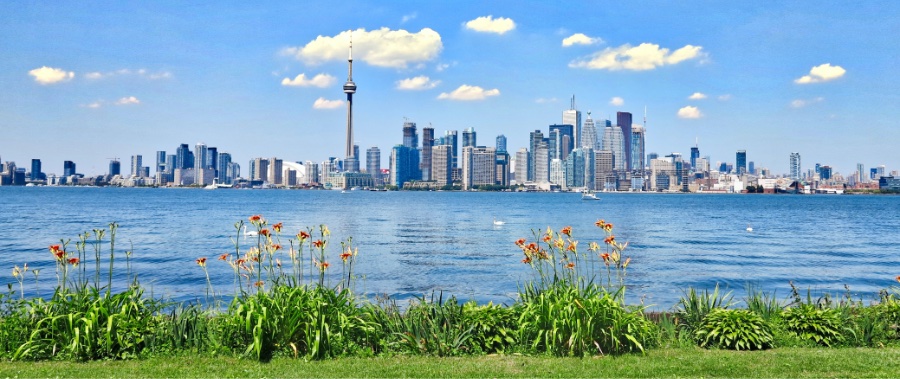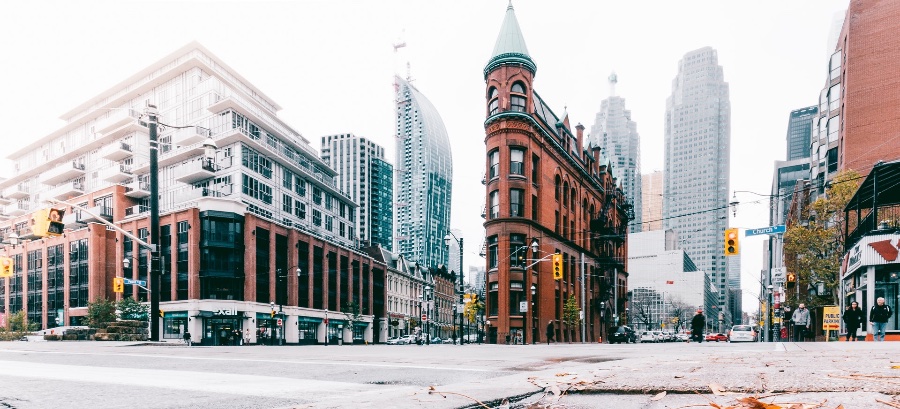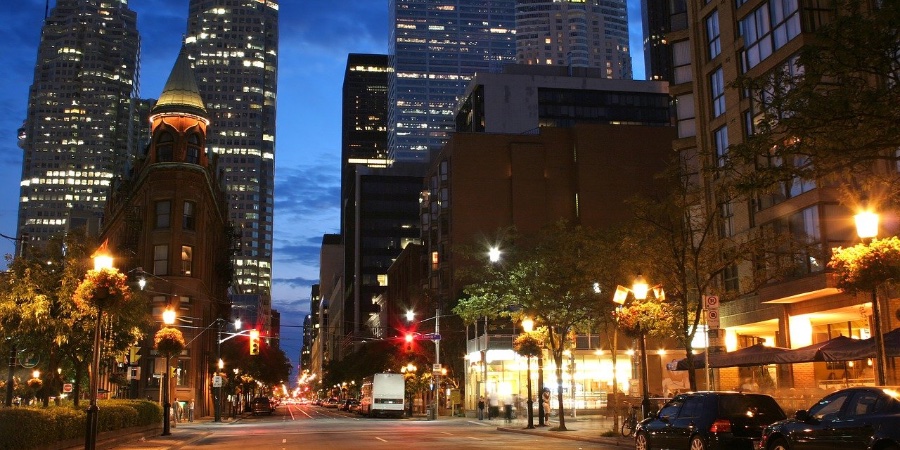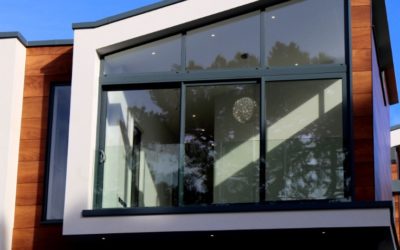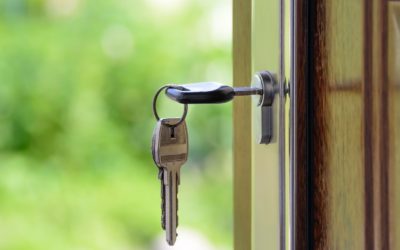
If you’re looking at homes in the Greater Toronto Area, you may be overwhelmed by the choices. The city’s real estate market is healthy and vibrant, and each neighbourhood has its own personality. From Mount Dennis to the Humber River area, homebuyers will find that the housing market has plenty to offer. Some areas are up-and-coming neighbourhoods, while others may offer unique features you can’t find in any other Toronto neighbourhoods.
Toronto Geography
Toronto is 243 square miles of varied countryside. Lake Ontario is to the south, while Etobicoke Creed, Highway 427, and Eglinton Avenue are to the city’s west. Steeles Avenue runs along Toronto’s north side, while the Rouge River and the Scarborough-Pickering Townline run along the east side.
The Humber River and the Don River cut through Toronto and empty into Lake Toronto. Their tributaries, the Rouge River and Etobicoke Creek, also flow through the city. Toronto has a tremendous amount of green space as more than 25% of its area is covered with more than 10 million trees, many of which are in the city’s valleys.
The West End Of Toronto
The West End is bounded by Bathurst Street on the east side, St. Clair Avenue on the north side, the Humber River on the west side, and Lake Ontario on the south side. Toronto’s West End neighbourhoods are centred on High Park and marked by Craftsman-style homes and buildings.
High Park is the crown jewel of the city’s parks and includes an ancient Oak Savannah Forest and Grenadier Pond. The West Toronto Junction is home to the city’s last authentic Main Street. The West End also features the West Toronto Railpath, an asphalt trail used by bicyclists and hikers.
The neighbourhood also contains some of the city’s best eastern European bakeries and food shops. The area is one of the most diverse sections of the city due to its large immigrant population. Italian immigrants started buying homes in this part of the city in the early 1900s and opening up shops on College Street, which runs through Little Italy. Many Portuguese and Koreans also live in this part of the city.
The East End Of Toronto
Much of the East End is residential, although it also contains commercial districts with a variety of small shops, bars and restaurants. Queen Street, Gerrard Street East and Danforth Avenue are the neighbourhood’s main thoroughfares.
The East End contains several neighbourhoods, including Leslieville, Greektown, the Beach, the Indian Bazaar and the Riverside District Gerard. It also includes a large number of parks, including Riverdale Park, Greenwood Park, Beaches Park, Jimmie Simpson Park, Kew Gardens and Withrow Park.
One major landmark in the East End is the Prince Edward Viaduct, also known as the Bloor Viaduct. It serves as the gateway to the area. Homes in the East End come in a wide variety, many of which have been renovated and brought up to date.
The East End is also home to many of Toronto’s popular events like Taste of the Danforth, the Leslieville Flea Market and the Beaches International Jazz Festival. Little India, Greektown and East Chinatown are also found in the East End.
Central Toronto/Midtown Toronto
Midtown Toronto is one of four central business districts outside the downtown area. Midtown is bounded by Bloor Street along the south and Eglinton Avenue or Lawrence Avenue along the north. Bayview Avenue runs along the east side, while Dufferin Street borders the area to the west.
Midtown Toronto contains many of the more upscale communities of the city, including Deer Park, Forest Hill, Rosedale and Summerhill. The Victorian and Tudor-style houses in Davisville Village are some of the most expensive in the city. The neighbourhood also has seen little development of high-rise condos except along Merton Street.
Since 2000, Midtown has seen a rise in the number of young families and professional singles.
The North End Of Toronto
The North End is located in the northern part of Old Toronto and can be considered part of Midtown. Historically, the region had a mixture of homes, but more recently, condos have been under development there.
Mount Pleasant Cemetery is a significant green space in the southern side of the neighbourhood. The North End also contains two ravines for the former Mud Creek and Yellow Creek, which feed into the Don River. Residents of the North End will find plenty of trails to explore.
Downtown Toronto
Downtown Toronto is located in Old Toronto and is the city’s central business district. It’s surrounded by Bloor Street along the northeast and Dupont Street along the northwest. Lake Ontario borders Downtown Toronto along the south side, while the Don Valley is to the east, and Bathurst Street runs along the western edge.
The city’s municipal government and Ontario’s provincial government are located there. Downtown Toronto contains the largest concentration of skyscrapers and businesses in Canada and the third largest number of skyscrapers in North America.
The area is also home to the city’s Financial District, which is also the centre of the financial industry in Canada. It includes the Toronto Stock Exchange, which is Canada’s largest. The Entertainment District is located to the west of the Financial District.
St. Lawrence is one of the oldest areas of the entire city, and it features many heritage buildings, theatres, restaurants and pubs. Toronto’s first neighbourhood was the town of York, and it contains one of the biggest concentrations of 19th-century buildings in all of Ontario. Downtown Toronto also contains a number of other historic districts, including Cabbagetown, Old Town, the Distillery District and Corktown.
7 Best Toronto Suburbs for Families
7. Brampton
Brampton is located in southern Ontario and has a population of about 600,000. It’s sometimes referred to as Flower City due to its massive greenhouse industry. Brampton’s main economic sectors now include manufacturing, retail administration, communication technologies, food and beverage, business services, information, logistics and life sciences. The city has a large Indian population due to mass immigration.
Buyers will find that the average house price in Brampton is almost $1 million, and houses tend to stay on the market for only about 10 days on average.
6. Etobicoke
Etobicoke sits on Lake Ontario, the Humber River and Etobicoke Creek. More than 350,000 residents call this suburb home, and its population is extremely diversified. If you’re looking to buy a house in Etobicoke, you may be interested to know that the population density is lower there than in some other parts of the Greater Toronto Area.
Most of the homes in Etobicoke are single-family dwellings, although many of the best condos are being built along the waterfront. The city has many parks and is largely middle class. The median house price in Etobicoke is about $700,000.
5. Vaughan
Vaughan is located in the Regional Municipality of York to Toronto’s north. It was the fastest-growing municipality in the country from 1996 until 2006 as its population grew by about 60%. Vaughan’s population has almost doubled since 1991.
The city consists of about a dozen historic communities, and it’s the third-largest employment centre in the Toronto area. Vaughan is located close to East York and is the biggest contributor to the York Region’s economy. Manufacturing dominates the city’s economy, followed by construction, retail trade, wholesale trade, and transportation and warehousing. Vaughan also contains a large number of small businesses.
The average house price in Vaughan is about $1.2 million, so first-time homebuyers may find property prices there to be out of their reach.
4. Oakville
Oakville is located in southern Ontario in the Halton Region. About 200,000 residents live there, and it is one of Canada’s most densely populated areas. The city is divided into several neighbourhoods, including Old Oakville, Kerr Village, Bronte, Eastlake, Clearview, College Park, Iroquois Ridge North and South, Glen Abbey, Palermo, River Oaks, Uptown Core, and West Oak Trails.
Home prices in Oakville average more than $1.4 million.
3. Markham
Markham is located in the Regional Municipality of York in southern Ontario. It’s not far from downtown Toronto and has a population of more than 300,000. The biggest industries in Markham are business services and technology and life-sciences companies. IBM is the city’s largest employer, and many multinational companies have their headquarters located there, including Advanced Micro Devices, Motorola, Oracle, Johnson & Johnson, Hyundai, Honda Canada, and Toyota Financial Services.
Markham consists of many original 19th-century neighbourhoods that have distinctive characters. It has a large number of community centres and recreational facilities and green space consisting of scenic pathways.
House prices average more than $1 million in Markham.
2. Pickering
Pickering is located in southern Ontario just east of Toronto in the Durham Region. The city’s southern area is mostly suburban, and the industrial part is located around Pickering Nuclear Generating Station.
The northern part of Pickering is mostly rural, although some residential areas are also located there. The city is also home to Altona, an abandoned ghost town, and a large number of historical buildings and untouched landscapes commonly used by the television industry.
Housing prices in Pickering average about $900,000.
1. Eglinton West
Eglinton West is also known as Little Jamaica due to its large Jamaican population, and it’s located in the York district of Toronto. Eglinton West is home to a large number of Jamaican, Guyanese, Grenadian, Trinidadian and Bajan businesses, among other ethnicities.
Eglinton Flats is a popular sports club in the York area, and it’s built on the Humber River Floodplain. Eglinton Flats offers bike trails, soccer fields, hockey pitches, a rugby field, a football field, and winterized tennis courts. The Crosstown LRT line is being built in the neighbourhood for subway transportation. It will include the Mount Dennis station in the Eglinton neighbourhood. The Crosstown LRT is a light rail line owned by Metrolinx and operated by the Toronto Transit Commission.
The average home price in the Eglinton West area is about $700,000.
List of Up & Coming Neighbourhoods in Toronto
Distillery District
The Distillery District is one of the older up-and-coming neighbourhoods in Toronto. It’s been designated a National Historic Site of Canada and contains North America’s biggest collection of Victorian-era industrial architecture.
The district has its roots in the Gooderham and Worts Distillery, but Cityscape Holdings purchased it in 2001 and transformed it into an area for pedestrians. After two years of construction, it was reopened to the public. The new owners would not lease any of the restaurant or retail space to franchises or chains, so most of the heritage buildings are filled with boutiques, coffee shops, cafes, restaurants, art galleries and jewellery stores.
The district doesn’t have a lot of single detached homes, and most of the households are singles or couples without children rather than families. Property prices in the district range from about $600,000 to $1.5 million. The district is one of several Toronto neighbourhoods that are ripe for investment due to a large number of condo and apartment buildings.
West Don Lands
The West Don Lands is another one of several Toronto neighbourhoods that are perfect for investment. The neighbourhood is still under construction. It’s located along the Don River waterfront. The West Don Lands was once an industrial area, but they are being rebuilt as a mixed-use neighbourhood.
The real estate market in the West Don Lands is healthy, with houses, condos and apartments for sale starting at about $500,000 and ranging up to $800,000.
Birch Cliff
Birch Cliff is another one of the up-and-coming neighbourhoods in Toronto. It’s in the southwestern part of the old city of Scarborough. Approximately a third of residents in Birth Cliff is of Irish descent. The part of the neighbourhood by the lake and ravines is more upscale, while the northern side contains more middle-class neighbourhoods.
House prices in the Birch Cliff area start at around $500,000, although the average price is around $1 million.
High Park
High Park is a city park in Toronto. The mixed-use recreational and natural park contains sports, cultural, and educational facilities, gardens, playgrounds, and a zoo. One-third of the park is in a natural state. The park is west of downtown Toronto and north of Humber Bay.
There are two neighbourhoods next to the park, which is Swansea and High Park North. Swansea is mostly residential with a variety of different housing types. The neighbourhood contains some high-end homes overlooking the park on the west and along Riverside Drive and the Brule Gardens enclave. Swansea also has a lot of semi-detached houses and bungalows in the centre of the neighbourhood.
High Park North is also mostly residential and contains many semi-detached houses built in the early 20th century and older houses built in the late 1800s and early 1900s. The neighbourhood contains many high-rise apartment buildings. The older homes are mostly Victorian, Edwardian and Tudor architecture. Many of them contain leaded and stained glass windows, French doors, hardwood floors and fireplaces.
Buyers will find that the real estate market in the area is on the pricier side, with an average house price of $1.3 million.
Riverdale
Riverdale borders the Down River and Greektown and includes several neighbourhoods, including Upper and Lower Riverdale, South Riverdale, Riverside, East Chinatown, the Studio District, Blake-Jones, the Pocket and Badgerow.
Riverdale contains several cultural neighbourhoods. The area also includes a large number of film studios.
Property prices in Riverdale tend to run over $1 million. The neighbourhood includes a large number of brick homes.
Little Italy
The Little Italy district of Toronto is known for its Italian Canadian restaurants and businesses. Many Latin and Portuguese Torontonians also call the area home. The neighbourhood is centred on a strip containing restaurants, bars and shops along College Street.
If you’re looking to buy a house in Little Italy, you will find that prices average $1.5 million.
Davenport
Davenport is located northwest of Downtown Toronto. The neighbourhood includes a large Portuguese population with sizable Italian, Latin American, British and Chinese populations as well. Most of the factories and warehouses in the neighbourhood left, and townhouses are being built in their place.
The real estate sector in Davenport includes homes that sell for an average of $1 million.
Junction Triangle
Junction Triangle is located in the west end of Toronto. It’s a triangle bounded on all sides by railway lines. Families will enjoy the neighbourhood’s Campbell Park and Campbell Rink. There is also a clubhouse with a community kitchen, and the park hosts a large number of community events.
Some of the real estate markets in the Junction area are more affordable than others. Landlords may find a good investment property or two to take on renters. Home prices average about $900,000 due to some of the more expensive parts of the neighbourhood.
Weston
Weston is located on the northwestern side of Toronto in the Borough of York. This part of the city includes many Victorian homes and apartment and condo towers. Most of the buildings in this neighbourhood are early to mid-20th century Ontario architecture. Most of the streets are lined with mature trees, some of which are well over 100 years old.
Weston has many parks for families to enjoy, including Cruickshank Park, which includes a large number of paved bicycle paths. Prices for property in Weston offer an excellent value, averaging about $800,000.
Leslieville
Leslieville runs along the Don River and is bordered by the Canadian National railway line. The neighbourhood has been cleaned up since the factories moved out. It’s a largely working middle-class neighbourhood and offers many new restaurants, shops and cafes. Many of the old industrial buildings have been transformed into condos.
Despite its working-class population, home prices in the area average almost $1 million.
Liberty Village
Liberty Village is located between the CP railway tracks and the Gardiner Expressway. It contains a large number of office buildings and new residential developments. The restaurant scene in Liberty Village is thriving, with more than 20 new restaurants opening in the last three years. The area is known for its art and design studies, although it also contains many media, technology and music companies.
Homes in Liberty Village are less expensive than in other parts of Toronto, with some available for $500,000 to $600,000.
Trinity-Bellwoods
Trinity-Bellwoods is located in the inner city of Toronto and has a large Portuguese population. The area has a large Portuguese and Brazilian population. The center of the community is Trinity Bellwoods Park, which is built around the former Garrison Creek ravine.
The average value for a home in Trinity-Bellwoods is about $1.6 million.
Final Words
The real estate market in Toronto is vibrant and thriving. It offers plenty of opportunities for property investment with excellent value for the money for families, singles and couples. If you’re looking for a deal on property in Toronto, speak with real estate agents who know the city well.

My job does not just start and stop with the house, but with you. When you sign with me you are taking on a partner. A partner that will help, guide and counsel you through the new chapter in your life. Call me and let’s take the next step together.
Related Posts
Core Values
My core values enable me to deliver exceptional customer service that leaves an impression on clients.

